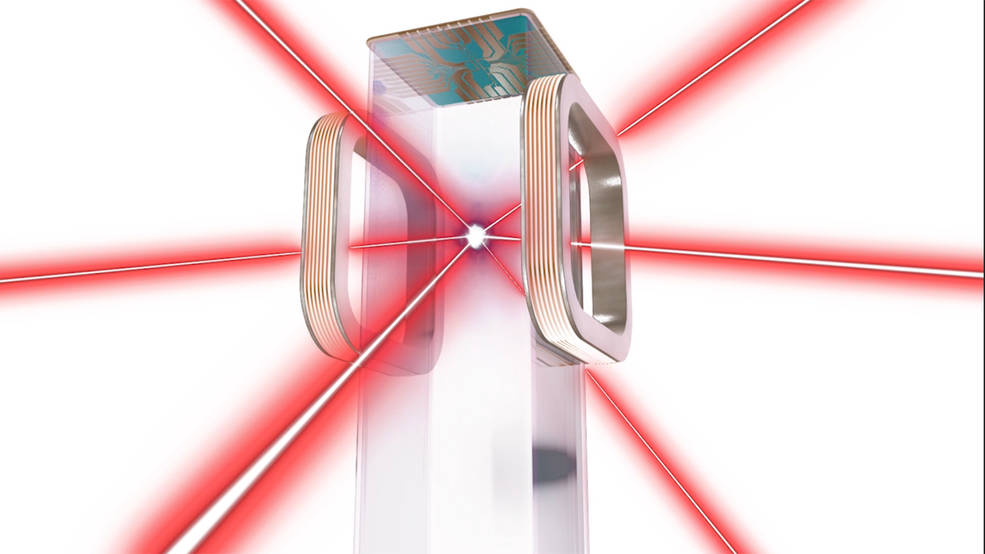
Six finely tuned lasers being used to slow down atoms inside NASA's Cold Atom Lab, which chills atoms to almost absolute zero. Image courtesy of: NASA/JPL-Caltech.
Aboard the International Space Station (ISS) sits NASA’s Cold Atom Lab, a small chamber capable of supercooling gas bubbles to a millionth of a degree above what is known to be the lowest temperature possible, absolute zero. The aim of this chamber is to conduct research into quantum physics by transitioning gas particles into what is known as Bose-Einstein condensates (BECs), atoms that scientists can use to see quantum effects play out at large scales. "Nothing that we know of in nature gets as cold as the atomic gasses produced in Cold Atom Lab”, said David Aveline,a member of the Cold Atom Lab science team.
In recent tests, a remote team from NASA's Jet Propulsion Laboratory (JPL) in California was able to suspend these gas particles in a microgravity environment aboard the station, allowing the supercooled particles to be observable for long enough to make some key discoveries. On Earth, tests such as these do not reach the level of being able to study the quantum effects of the supercooled gas as gravity pulls the atoms into oblong shapes, often destroying the delicate structure holding the gasses in place for study. In the Cold Atom Lab, the microgravity environment allows for the supercooled gasses to be free from the exertion of gravity on the particles, leaving them in a suspended state and able to be studied for 5-10 seconds at a time.
The first major discovery is that BECs essentially function as a fifth state of matter with pronounced quantum activity that is only just beginning to be studied. "Our primary goal with Cold Atom Lab is fundamental research — we want to use the unique space environment of the space station to explore the quantum nature of matter," said Jason Williams, a project scientist for the Cold Atom Lab at JPL. "Studying ultracold atoms in new geometries is a perfect example of that."
The long term goals of the tests are to explore new ways in order to implement quantum mechanics into computers and existing technology to further expand our capabilities both on Earth and in space. "I really think we've just begun to scratch the surface of what can be done with ultracold atom experiments in microgravity," said Ethan Elliott, a member of the Cold Atom Lab science team at JPL. "I'm really excited to see what the fundamental physics community does with this capability in the long term."
Cold Atom Lab has run successfully for two years, and recent upgrades to the facility with a new tool called an atom interferometer will allow scientists to use atoms to precisely measure forces, including gravity, making it the first atom interferometer to operate in space.